Cashew is a fruit or a nut? The complete explanation of cashew fruit and cashew nut

Mục lục
Do you like to eat cashews? Cashews have a delicious, fatty taste and are very nutritious. But do you know anything about cashews, their origin, ingredients, health benefits, and how to use them? Are cashews fruits or seeds? If you are also wondering, let's find out and discover interesting things about cashews in this article.
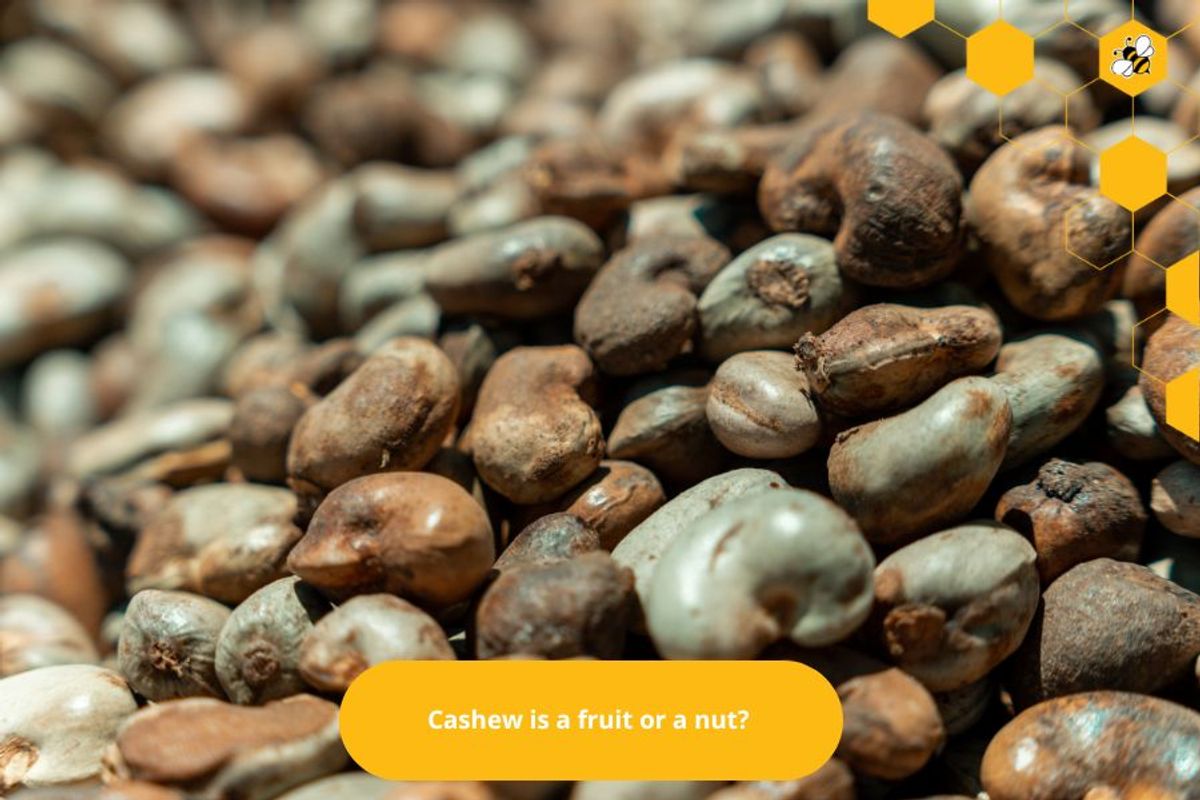
A cashew is a fruit or nut
Cashew is a fruit that is shaped like a chestnut and is usually red or brown in color. The fruit has an outer shell to protect the seed inside, and they are grown from cashew trees. Cashew trees are mainly grown in the Southwest region and are known as one of the key economic crops of Vietnam.
Cashew nuts have a delicious taste and high nutritional value for the body and are widely used in the culinary and food processing industries (salted roasted cashews, cheese cashews, cashew butter, cashew milk, etc.). The young shoots and leaves of the cashew tree can be eaten. The swollen stem of the fruit can also be eaten as a fruit or used to make jam or drinks. Cashew nuts also contain Proanthocyanidins (PACs), which are antioxidants that help prevent the growth of cancer cells.
Cashew nuts have a delicious taste and high nutritional value for the body and are widely used in the culinary and food processing industries (salted roasted cashews, cheese cashews, cashew butter, cashew milk, etc.). The young shoots and leaves of the cashew tree can be eaten. The swollen stem of the fruit can also be eaten as a fruit or used to make jam or drinks. Cashew nuts also contain Proanthocyanidins (PACs), which are antioxidants that help prevent the growth of cancer cells.
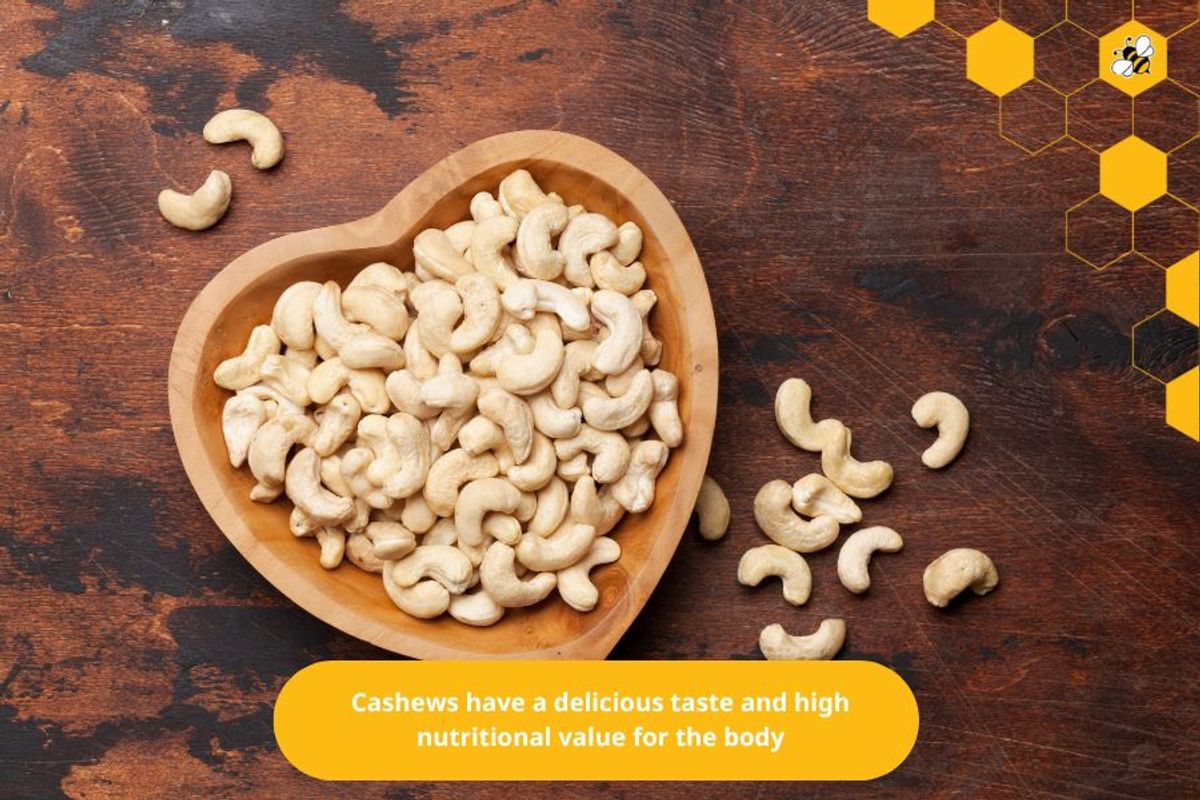
A full explanation of cashew
Cashew is a type of nut originating from the tropics, not only a delicious dish but also brings a lot of nutritional value to human health. With a delicious and characteristic flavor and containing many important nutrients, cashews have become an indispensable part of the diet of many people.
Characteristics of cashew
Shape and color: Cashew has a shape similar to a chestnut and is usually red or brown.
Structure: The fruit has an outer shell that protects the seed inside, and they are grown from cashew trees.
Origin: Cashew trees are often grown in the Southwest region of Vietnam and are known as one of the important economic crops of the country.
Structure: The fruit has an outer shell that protects the seed inside, and they are grown from cashew trees.
Origin: Cashew trees are often grown in the Southwest region of Vietnam and are known as one of the important economic crops of the country.
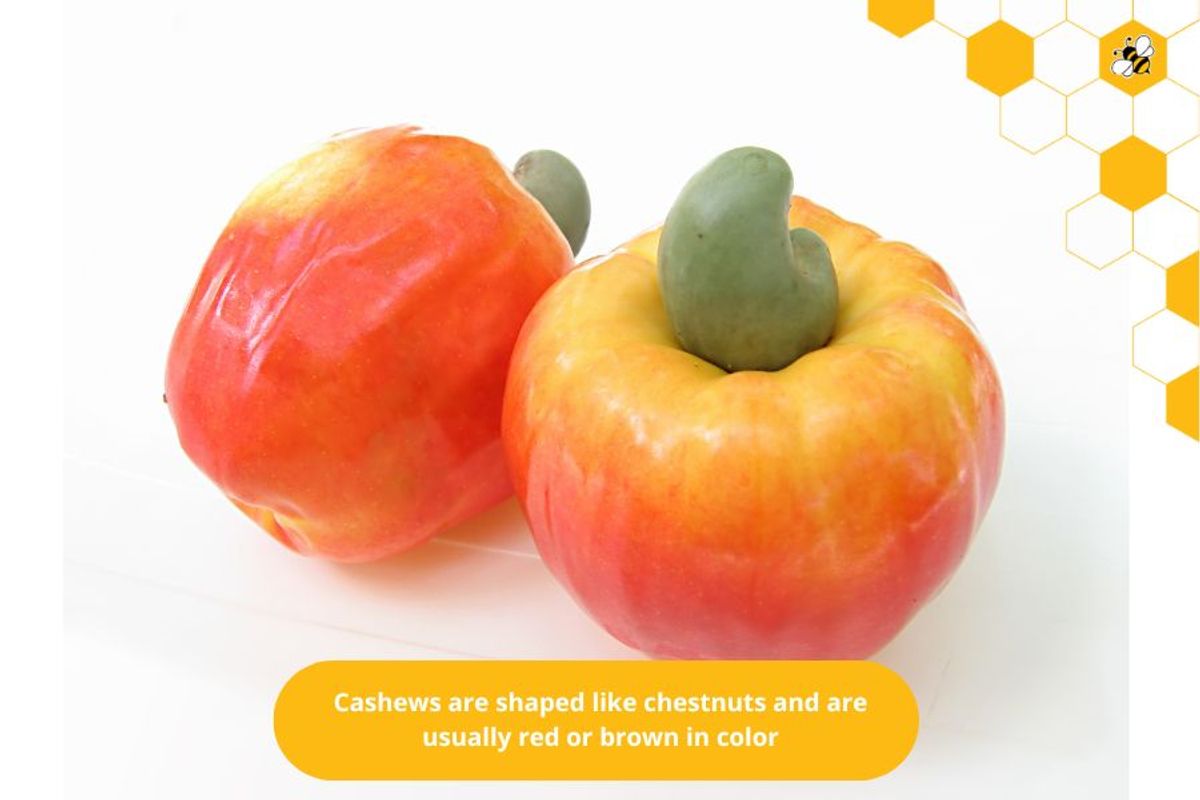
Nutritional composition of cashews
Nutritional value of cashews
Vitamin C: Cashews contain high levels of vitamin C (261.5mg/100g of cashew flesh), 5-6 times higher than oranges, lemons, and bananas.
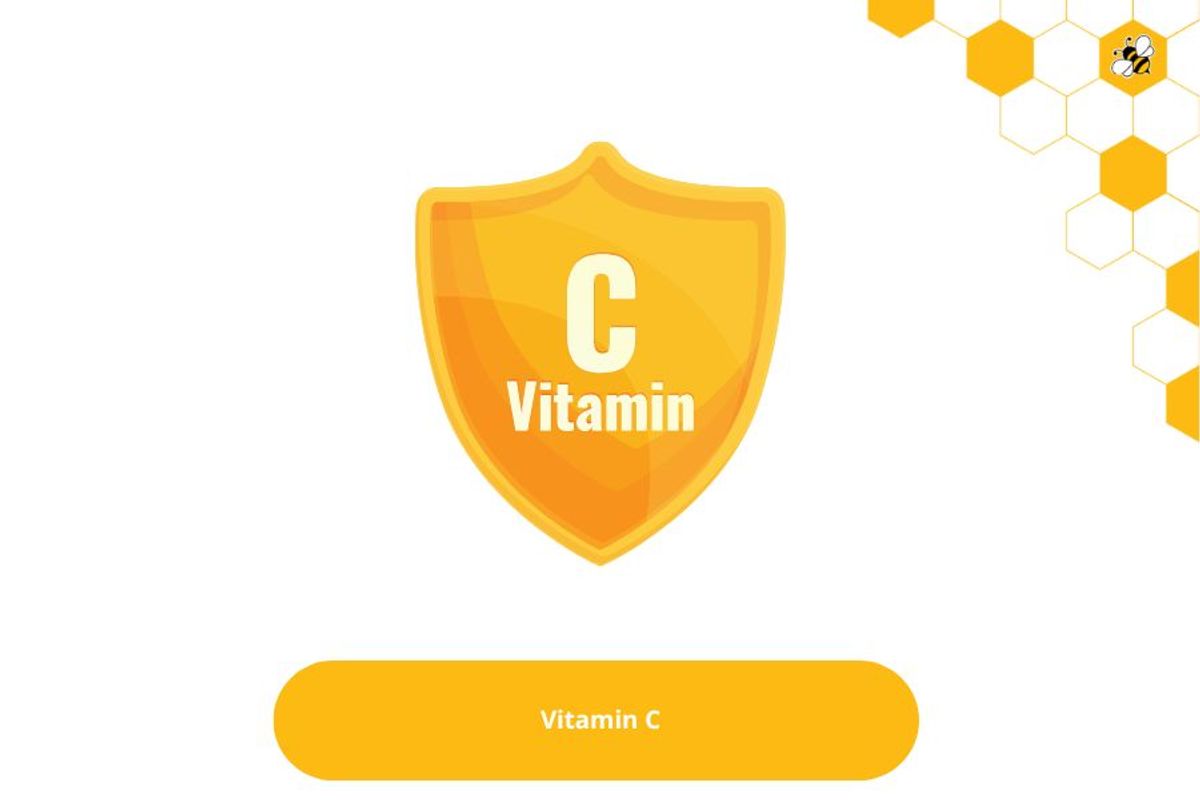
Antioxidants: Cashews are rich in ellagic acid and flavonoids, two substances that can fight free radical damage in the body.
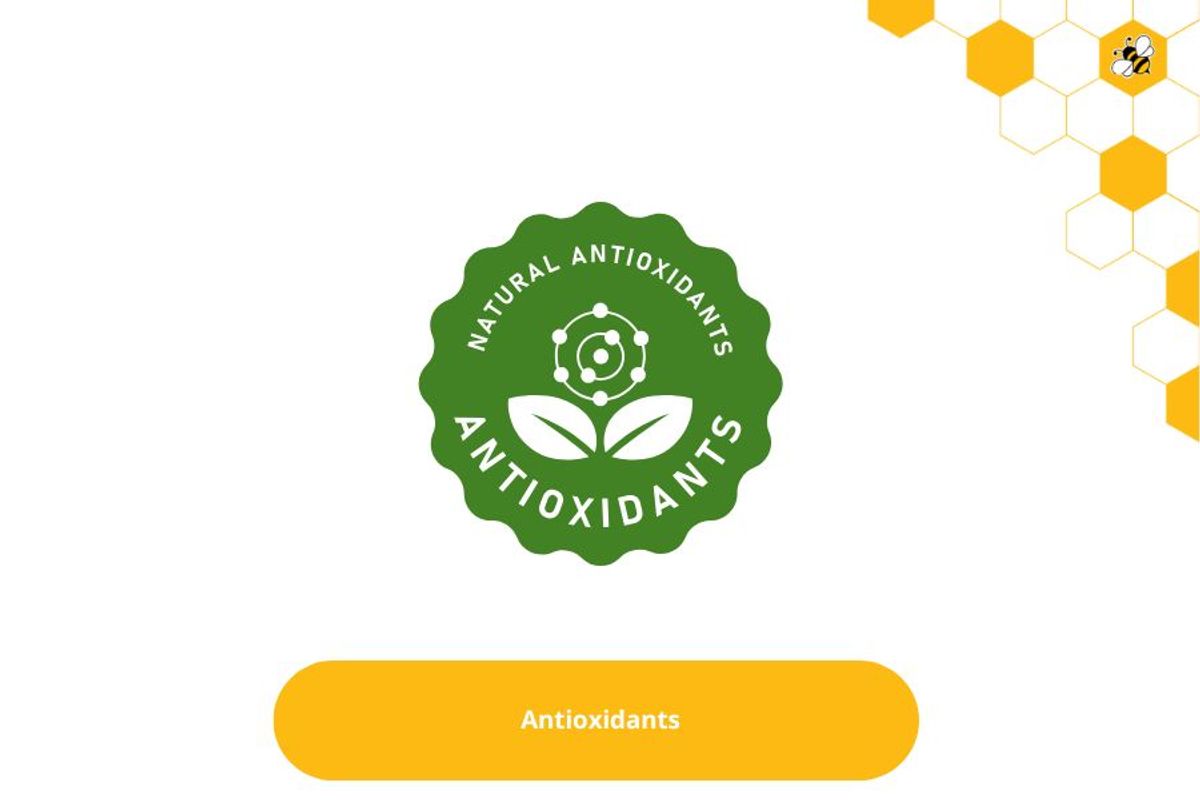
Fiber and protein: Cashews provide fiber, which helps improve digestion and prevent constipation. Additionally, they contain protein and important minerals.
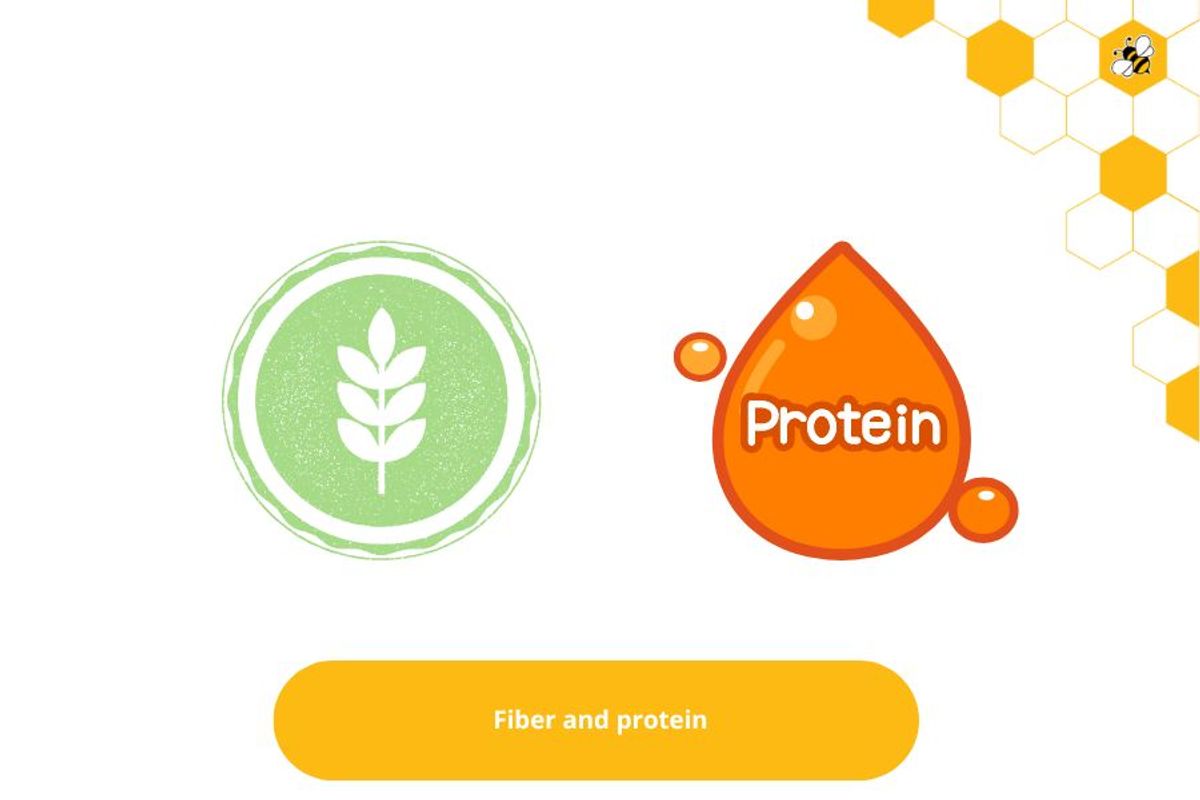
Benefits of cashews
Enhance brain function: Cashews contain a lot of choline, a very important nutrient for the development and function of the nervous system.

Cardiovascular protection: The omega-3 fatty acid content in cashews can help reduce bad cholesterol levels and increase good cholesterol levels, improving cardiovascular health.

How to use cashew nuts in cooking
Roasted cashew nuts with salt: A traditional and popular dish in Vietnam. Cashew nuts are roasted with salt and spices, creating a characteristic-rich, crispy flavor.
Cashew jam: Cashew nuts can also be used to make jam. Cashew nuts are combined with sugar and cooked until the mixture is thick and soft. Cashew jam is a delicious sweet dish, suitable for giving as gifts.
Cashew jam: Cashew nuts can also be used to make jam. Cashew nuts are combined with sugar and cooked until the mixture is thick and soft. Cashew jam is a delicious sweet dish, suitable for giving as gifts.
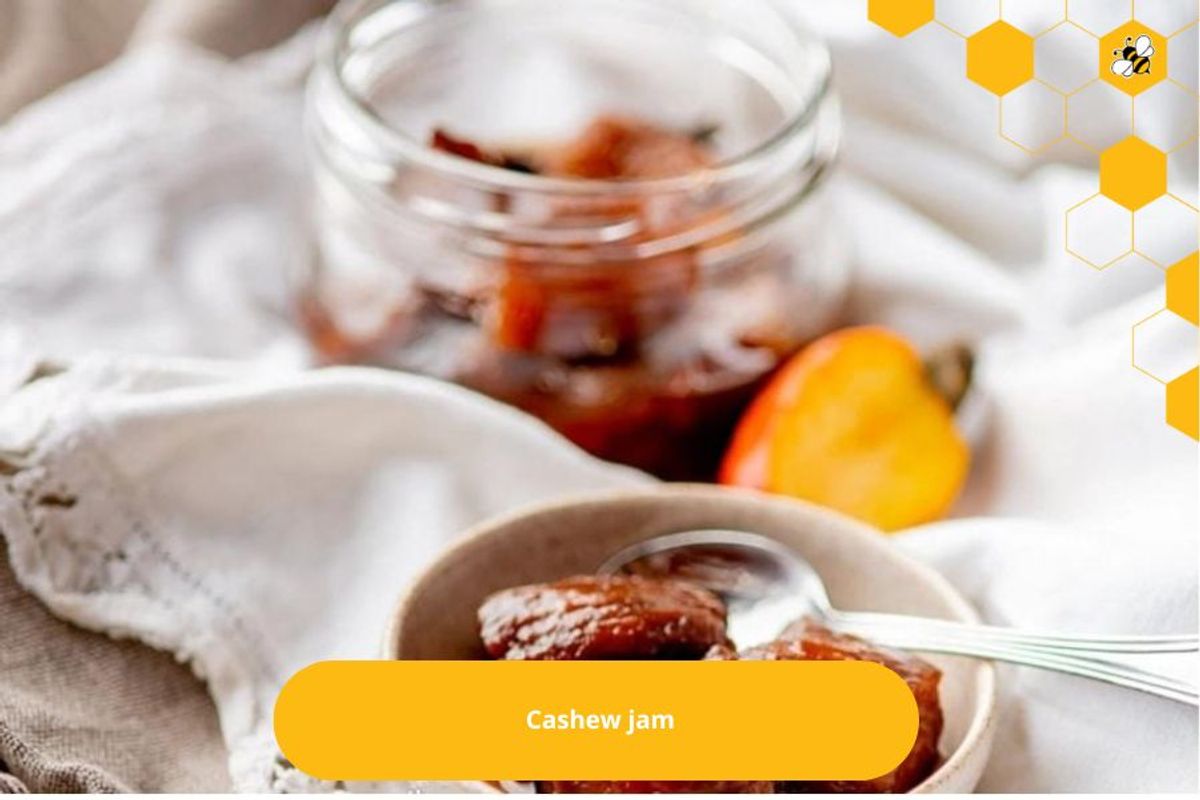
Cashew Salad: Ripe cashews can also be used in salads. The crunchy cashews add a delicious and distinctive taste.
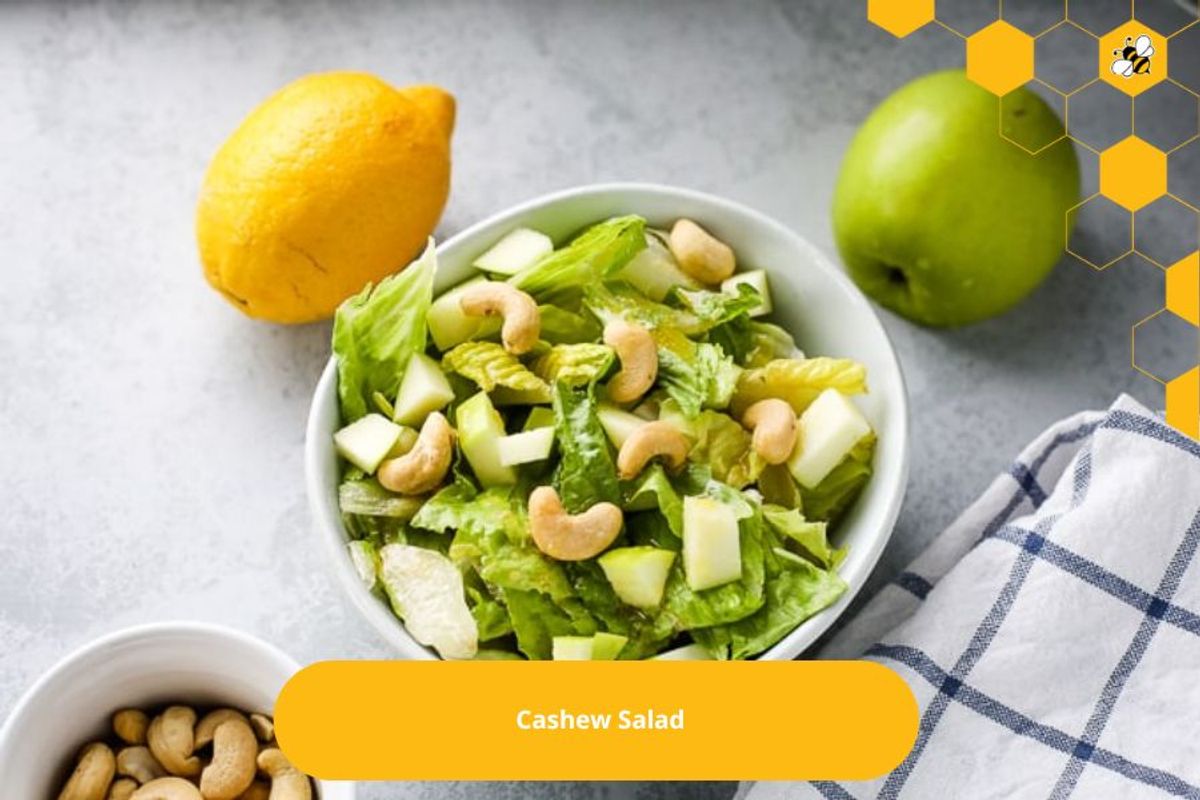
Cashews Explained
Cashews are the seeds of the cashew tree (Anacardium occidentale), a member of the Anacardiaceae family native to the coastal regions of northeastern Brazil. The cashew tree can grow up to 14 meters tall and has an average lifespan of 20-25 years, sometimes up to 40 years. The cashew fruit is oval or pear-shaped, yellow or red, and can be eaten or processed into a drink or jam.
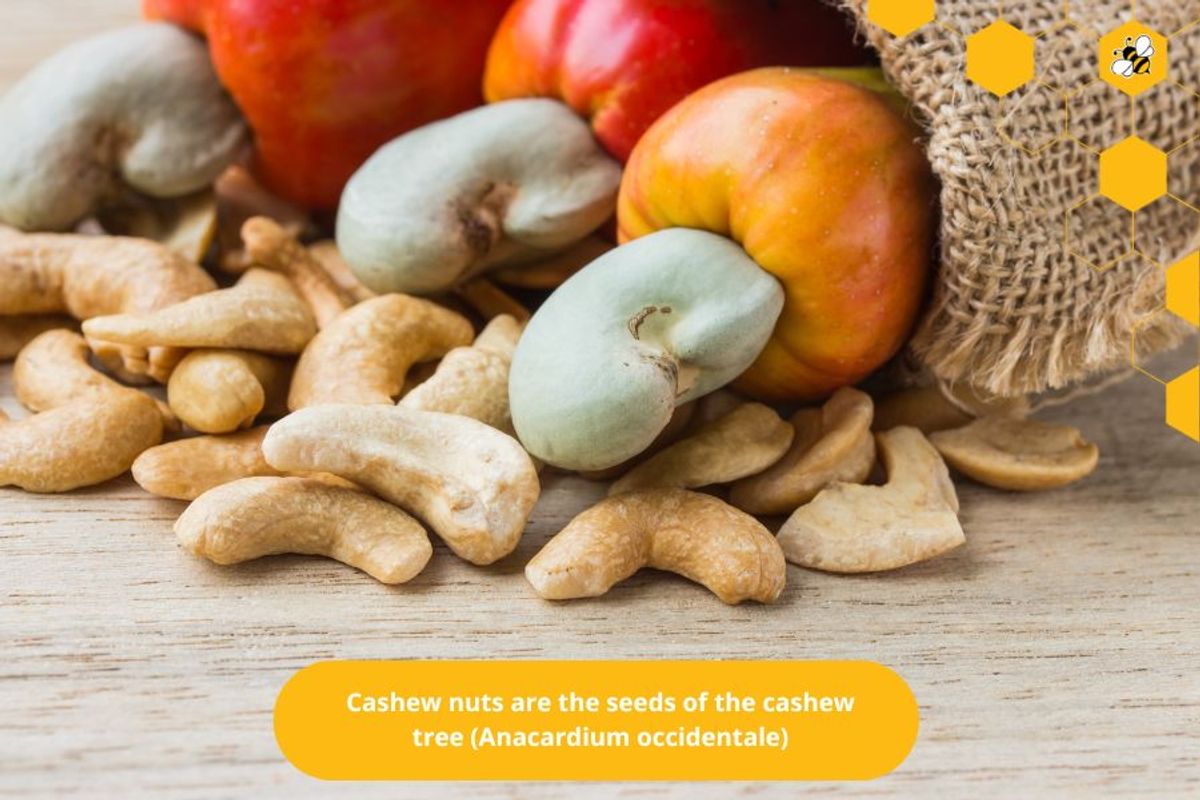
Good for skin and hair health: Cashews contain many vitamins and minerals, helping to maintain good body functions.

Reduces appetite: The high fiber content in cashews increases the feeling of fullness for a long time, helping to control body weight and reduce the accumulation of fats and cholesterol.

Cashews are not only a delicious snack, but also an important ingredient in many dishes, drinks, and dairy substitutes. Regularly add cashews to your diet to enjoy their benefits for your health and life!
Nutritional composition of cashews
Cashews are a type of nut that originated in South America, especially Brazil. They have a sweet taste and soft texture and are now widely grown and used around the world. Cashews are not only delicious but also contain many nutrients that are important for human health.
Here are the nutritional components of cashews in 100 grams of edible:
Energy: 605 Kcal
Protein: 18.4 grams
Glucid: 28.7 grams
Lipid: 46.3 grams
Fiber: 0.6 grams
Vitamins:
Vitamin E: 0.9 mg
Vitamin K: 34.1 mg
Vitamin B6: 0.417 mg
Minerals:
Calcium: 28 mg
Sodium: 12 mg
Potassium: 660 mg
Magnesium: 292 mg
Folate: 25 mcg
Thus, cashews contain many nutrients that are good for the body, including protein, unsaturated fat, vitamins, and minerals. They have the effect of supporting blood function, and the immune system and preventing some cardiovascular diseases and kidney stones. If you regularly use cashews in your daily menu, you can reduce the risk of cardiovascular disease.
Here are the nutritional components of cashews in 100 grams of edible:
Energy: 605 Kcal
Protein: 18.4 grams
Glucid: 28.7 grams
Lipid: 46.3 grams
Fiber: 0.6 grams
Vitamins:
Vitamin E: 0.9 mg
Vitamin K: 34.1 mg
Vitamin B6: 0.417 mg
Minerals:
Calcium: 28 mg
Sodium: 12 mg
Potassium: 660 mg
Magnesium: 292 mg
Folate: 25 mcg
Thus, cashews contain many nutrients that are good for the body, including protein, unsaturated fat, vitamins, and minerals. They have the effect of supporting blood function, and the immune system and preventing some cardiovascular diseases and kidney stones. If you regularly use cashews in your daily menu, you can reduce the risk of cardiovascular disease.
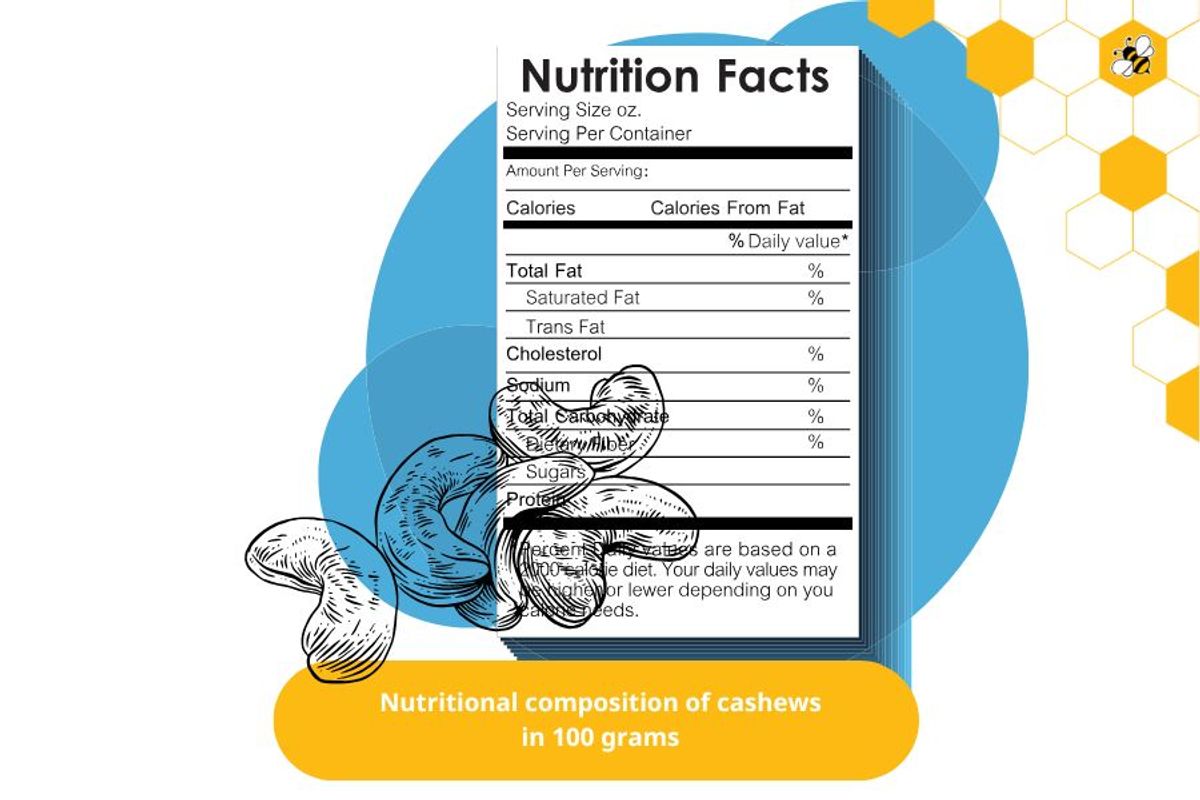
Summary
Cashew nuts are a popular nutritious nut today because they have a rich, delicious and nutritious flavor. Cashew nuts are not only an attractive snack, but also an important ingredient in many dishes, drinks and milk substitutes. Cashew nuts also have many health benefits such as good for the cardiovascular system, skin, hair, eyes, bones and immune system.
Cashew fruit is a nutritious part, consisting of two parts: the real fruit (cashew nut) is kidney-shaped, looks like an upside-down seed, bright in color as we often see and the false fruit (cashew fruit) is the swollen stem of the fruit, yellow or red.
Cashew fruit is a nutritious part, consisting of two parts: the real fruit (cashew nut) is kidney-shaped, looks like an upside-down seed, bright in color as we often see and the false fruit (cashew fruit) is the swollen stem of the fruit, yellow or red.